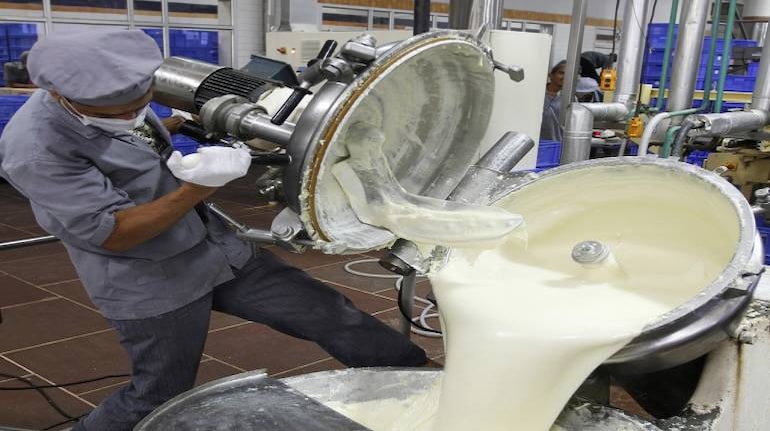



Before reshuffling the Cabinet on July 6, the government created a new ministry -- Ministry of Cooperation -- to be headed by current Union Home Minister Amit Shah.
Moneycontrol explains the motive behind the move, what cooperative societies are, which are some of the popular cooperative societies in India and what will be the role of the new ministry.
What is a cooperative society?
Cooperatives are enterprises which are owned, controlled and run by its members to realise their common economic, social, and cultural needs and aspirations. Cooperative societies function for a common benefit with a motive to help its members.
Cooperative societies in India have played a significant role in strengthening the rural economy.
What is the history of the cooperative movement in India?
The history of cooperative societies dates back to the pre-Independence era, in response to the agrarian distress and overall indebtedness.
The first cooperative society legislation came into existence with the Cooperative Credit Societies Act, 1904. In 1912, another Act was passed to rectify some of the drawbacks. The next landmark Act came in 1919 under the Montague-Chelmsford Reforms, under which cooperation was made a provincial subject. It allowed the provinces to come up with their own legislation for governing cooperatives.
Later, in 1942, the British government announced the Multi-Unit Cooperative Societies Act to cover cooperative societies whose membership extended beyond one province.
In post-Independent India, in 1958, the National Development Council (NDC) had recommended a national policy on cooperatives and also for training personnel and setting up cooperative marketing societies.
In 1984, Parliament enacted the multi-state cooperative societies Act to remove the plethora of laws governing the same types of societies.
In 2002, the then NDA government, under the leadership of Atal Bihari Vajpayee, announced a National Policy on Cooperatives to support the promotion and development of cooperatives. It is also aimed at reducing regional imbalances and strengthening cooperative education, training and human resource development.
Examples of cooperative societies and how they function
Amul is a successful example of a dairy cooperative society. It is managed by the Gujarat Co-operative Milk Marketing Federation Ltd, and is jointly owned by around 36 million milk producers from the western state.
The produce from the milk producers is pooled and distributed by the cooperative, thereby eliminating the need for middlemen. Milk farmers from Gujarat have hugely benefited as a result of this as they would have otherwise found it difficult to individually sell to customers directly.
As per the National Dairy Development Board’s 2019-20 Annual Report, there are 1,94,195 cooperative dairy societies in the country.
Some other prominent examples of cooperative societies are Kendriya Bhandar and Sahkari Bhandar, which buy goods directly from producers/ manufacturers, thus removing middlemen and delivering the produce at lower costs to the end-consumers, thereby protecting the interests of both the producers and the customers.
Cooperative societies are not restricted to agriculture alone. In banking and finance, cooperative institutions are spread across rural and urban areas as credit societies.
For instance, at the village level, there are the village-level primary agricultural credit societies (PACSs), which anticipate the credit demand of a particular village and get credit from the district central cooperative banks (DCCBs). At the apex of the rural credit lending structure is the State Cooperative Banks. It is another successful example of cooperative societies as individual farmers lack the bargaining power to make their case for credit with a bank.
As per NABARD’s 2019-20 report, there are 95,238 PACSs, 363 DCCBs and 33 state cooperative banks in India.
Apart from credit societies, there are also cooperative housing societies in urban areas and cooperative marketing societies in rural areas.
What are the laws governing the societies and which government bodies oversee the sector?
Cooperation comes under the concurrent list of the Constitution, which means both the Centre and states can make rules to govern them.
Most cooperative societies are governed by the laws in the respective states, with a Registrar of Societies and a Cooperation Commissioner as their governing office.
The National Cooperative Development Corporation (NCDC) works for the promotion of the cooperative movement in India. It is tasked with planning, promoting, coordinating and financing cooperative development programmes at the national level. Also, it provides financial, insurance and technical support to cooperative institutions of farmers and other weaker sections.
What will be the role of the new ministry?
According to a press release from the Press Information Bureau, the Ministry of Cooperation will provide a separate administrative, legal and policy framework for strengthening the cooperative movement in the country.
In the release, the government also informed that the new ministry will work for improving ‘ease of doing business’ for cooperatives by streamlining processes to enable the development of Multi-State Cooperative Societies (MSCS).
Discover the latest Business News, Sensex, and Nifty updates. Obtain Personal Finance insights, tax queries, and expert opinions on Moneycontrol or download the Moneycontrol App to stay updated!